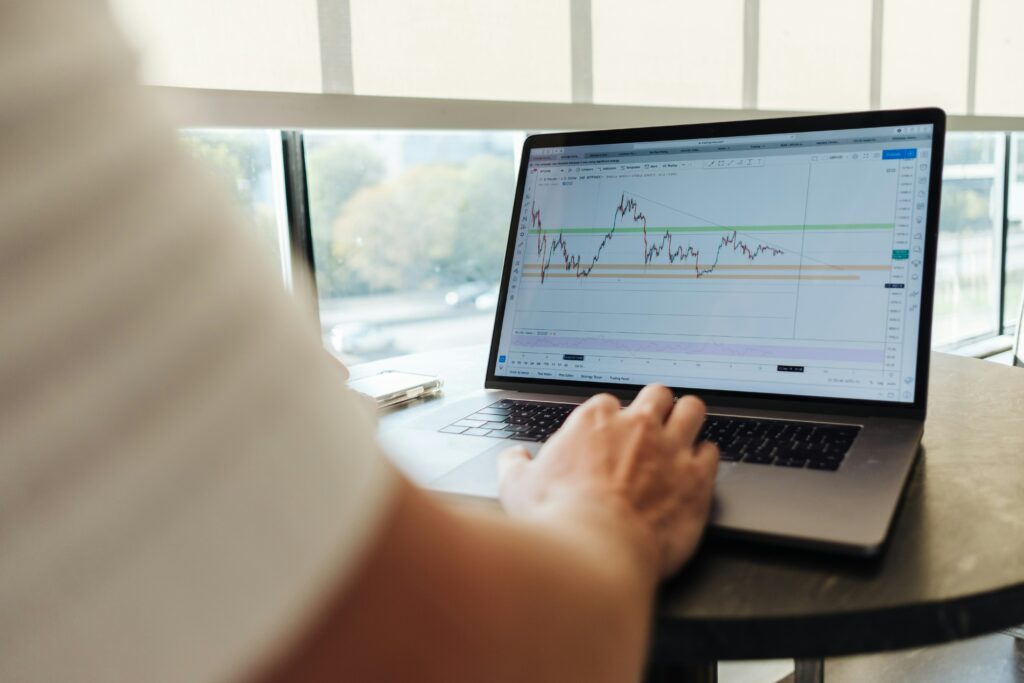Several indicators throughout the Nordic region suggest that inflation is losing steam, and for the most part, the economies have shown resilience. In Sweden, a decrease in inflation raises hopes for economic improvement, though the currency remained under pressure for most of 2023. In Norway, the economic activity has slowed, however, the GDP is still expected to grow in 2024 (SEB, 2024). Despite an increase in inflation in Q4, the Danish economy is improving, with high employment rates being one of the main drivers for growth. The Finnish economy is currently in a recession, however, betterment in 2024 is anticipated even though GDP is expected to decline by 0.2% (SEB, 2024). So, there are differences found in the Nordics, however, when compared to other countries in Europe, the Nordics are doing well.
When investigating the Nordic economies and comparing them to other countries in Europe, it becomes clear that the Nordics are in a good position. The GDP per capita (PPP) is well above average in the EU, as seen in the table below:
| Denmark | Sweden | Norway | Finland | EU Average |
| 74,897 | 65,157 | 114,929 | 59,625 | 54,625 |
Table 1: GDP per capita, PPP (current international $) (International Comparison Program, World Bank | World Development Indicators database, World Bank | Eurostat-OECD PPP Programme) (World Bank, 2022)
Denmark
Denmark is waiting to take off, according to SEB Group (SEB, 2024). Consumption and housing indicators are getting better, and GDP growth is expected to increase in the years to come, with 1.0-1.5% in 2024 (Danske Bank, 2023a; SEB, 2023). This is expected to increase in 2025, so it is safe to say that the Danish economy is very strong compared to other European countries (Danske Bank, 2023a). Finally, the labor market is robust (Beskæftigelsesministeriet, 2023), which evidently will lead to an increase in wages, but within reasonable limits (SEB, 2024). Therefore, the Danish economy is not predicted to face any kind of recession.
Consumer spending is expected to increase, but it is still lower than the 2021 level (Danske Bank, 2023a). One reason behind this could be ascribed to an appetite for saving. However, as incomes rise and consumer confidence recovers, consumption is likely to pick up in 2024-2025. The forecast assumes a slow increase in the propensity to buy, but a stronger recovery is possible.
The Danish workforce remains mostly employed, with only 2.9% of workers being jobless (Statistics Denmark, 2024), as it has been throughout 2023. Despite a minor increase in 2023, the unemployment rate is exceptionally low. This can positively affect the economy and raise consumer spending after a time of strain caused by high inflation and geopolitical uncertainty, which to some extent still remains.
In January, OECD (2024) published their country report for Denmark, and praised the Danish economy and called it robust.
Sweden
In the latter part of 2023, inflation went down (SEB, 2024; Statistics Sweden, 2024a), which will positively affect the economy. This will increase the hope for a turnaround for the economy. Furthermore, GDP growth is anticipated in 2024 of 0.1-1.7% (Danske Bank, 2023a; SEB, 2024), following the projections from 2023.
The Swedish households remain resilient, and the private consumption is stable, and improved in the latter part of 2023 (Danske Bank, 2023a). Consumer confidence has recovered since early 2023 (Danske Bank, 2023b), yet remains low, thus squeezing household finances (SEB, 2024). That said, real disposable income is expected to increase in 2024 (Ibid.), which may influence consumption positively.
The labor market in Sweden is now showing signs of deceleration, despite being strong for the past year (SEB, 2024). In the fourth quarter of 2023, unemployment continued to rise (Statistics Sweden, 2024b). This negative trend is set to continue in 2024, however, it will not be dramatic (SEB, 2024), and the labor market is still strong, which positively affects the economy.
The Swedish government is sticking to its line that stimulates the economy, yet it is unclear if this can decrease inflation (Danske Bank, 2023a), as stimulative economic policies can lead to higher inflation at times, consequently, damaging the private consumption.
Norway
Despite the slowdown in GDP growth in 2023 resulting from a deceleration in economic activity, a recovery is anticipated in late 2024 and 2025. This anticipated rebound is attributed to various economic factors, such as lower interest rates and higher real wage growth.
Consumer spending to remain modest in 2024. Retailers are pessimistic about the prospects of goods consumption in the winter of 2024, as consumers are likely to save more and spend less. Private consumption is forecast to grow by only 0.5% in 2024. As real wage growth accelerates and interest rates fall, consumption is expected to increase by 2.1% in 2025. However, higher unemployment and a build-up of household savings will limit the recovery (SEB, 2024).
While unemployment rates continue to be low, there has been a slight increase in recent months. Danske Bank (2023a) expects that the unemployment rate will rise in 2024, as the labour market is cooling, yet it will remain very low (SEB, 2024). Despite the minor increase in the unemployment rate, we anticipate it will have a minor effect on private consumption, as wage growth also appears to rise further (Danske Bank, 2023a).
Norway’s existing economic policies aim to protect household finances by regulating inflation. This has proved to be a difficult task, however, it appears so that the inflation has peaked (Danske Bank, 2023a). This might impact the Norwegian government’s monetary policy in the future, yet so far it has remained tight (OECD, 2023a).
Finland
Finland’s economy will pick up in 2024, despite being in recession (Danske Bank, 2023a), before moving into a positive phase (Danske Bank, 2023a; OECD, 2023b; SEB, 2024). Inflation is expected to decrease in Finland, which may affect real purchasing power (Danske Bank, 2023a).
The gradual recovery in consumer spending is underpinned by improvements in wage and salary earnings, which are expected to boost real purchasing power among consumers. This enhancement in purchasing power plays a crucial role in driving private consumption upwards, despite facing a backdrop of slowly rising unemployment rates (Danske Bank, 2023a; OECD, 2023b). The increase in wages helps to offset the negative impact of higher unemployment by providing those still employed with more disposable income, thereby encouraging spending.
The unemployment rate kept rising in 2023 and is expected to hit the levels that followed the pandemic (SEB, 2024). This rise is projected to reverse in 2025, when unemployment is likely to fall to 7.3%, close to 2022 levels (OECD, 2023b; SEB, 2024; SEB Group, 2023).
The rather newly appointed Finnish government has a clear focus for their economic policy, which aims to foster sustainable economic growth, yet this may appear to be a difficult task. The proposed budgets reduce spending on environmental and social programs, but Finnish government will keep spending on security and defence and also give tax breaks (OECD, 2023b).
__________________________________________________
References
Beskæftigelsesministeriet. (2023). Status på arbejdsmarkedet, oktober 2023.omi-fortsaetter-men-i-et-roligere-tempo/
Danske Bank. (2023a). Coming in for a soft landing Nordic Outlook. http://www.danskebank.com/danskeresearch
Danske Bank. (2023b). Nordic Outlook: Divergent fortunes. http://www.danskebank.com/danskeresearch
OECD. (2023a). OECD Economic Outlook 2023. https://stat.link/rlui7d
OECD. (2023b). OECD Economic Outlook 2023. https://stat.link/j2vclu
OECD. (2024). OECD Economic Surveys: Denmark 2024. https://doi.org/10.1787/d5c6f307-en
SEB. (2023). Nordic Outlook: January 2023. https://mb.cision.com/Main/4324/3701844/1797787.pdf
SEB. (2024). Nordic Outlook: January 2024. In 2024.
SEB Group. (2023). Nordic Outlook, August 2023.
Statistics Denmark. (2024). Unemployed persons (register). https://www.dst.dk/en/Statistik/emner/arbejde-og-indkomst/arbejdsloese/arbejdsloese-register
Statistics Sweden. (2024a). The inflation rate according to CPI was 4.4 percent in December 2023. https://www.scb.se/en/finding-statistics/statistics-by-subject-area/prices-and-consumption/consumer-price-index/consumer-price-index-cpi/pong/statistical-news/consumer-price-index-cpi-december-2023/
Statistics Sweden. (2024b, February 6). Unemployment continued to rise during the fourth quarter 2023. https://www.scb.se/en/finding-statistics/statistics-by-subject-area/labour-market/labour-force-surveys/labour-force-surveys-lfs/pong/statistical-news/labour-force-survey-lfs-fourth-quarter-2023/
World Bank. (2022). GDP pr. capita, PPP, International Comparison Program. World Bank. https://data.worldbank.org/indicator/NY.GDP.PCAP.PP.CD?most_recent_value_desc=true










